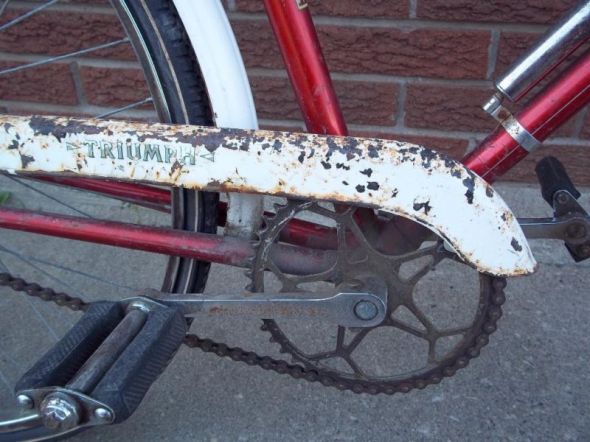Hercules Bicycle Frame Numbers
£ 0.00 monthly Next Most bicycles have a frame number stamped into the metal under the bottom bracket. If it’s a carbon frame, the number will be etched into the surface or displayed on a sticker. Occasionally, the frame number will be on the inside of the chain stay or on the down tube or top tube.
See the diagram below if you need to identify these areas of the bicycle. Please note: 6-digit numbers starting in BS or EN are NOT the frame number. Some older bikes do not have frame numbers so you will need to fit your cycle with a frame identity tag. If your bike does not have a frame number please call us on 0333 000 1234 or email and we will be happy to assist you. Still have a question that needs answering?
The Hercules Cycle and Motor Company Limited 1910 The company was founded on 9 September 1910 by the brothers and in Coventry Street, Birmingham initially producing only 25 bicycles a week 1910 Private company. 1912 Production had more the doubled, and the company was forced to move to larger premises in Conybere Street, Highgate. They also took on some workers. Motorcycles built from 1912 to 1914 and used, and engines.
The company offered two models of 3.5hp and 4.5hp, fitted with and engines. Fitted with forks, there was also the option of a two-speed gear. Both and were fitted for 1914, and the 6hp unit had a three-speed gearbox.
By 1914 they were producing 10,000 bicycles per year WWI They made armament shells 1921 The company produced around 20,000 cycles. 1923/4 A third move was made to an ex-Dunlop factory in Aston.
Hercules Bicycles Values
This became known as 'Britannia Works', and grew until it occupied thirteen acres, and was the site of the company's offices. 1927 Hercules made 250,000 cycles 1929 Six years later another Dunlop works was acquired, this time less than a mile to the north-west in Long Acre, Nechells, Birmingham. This second site was named 'Manor Mills' During this period, Birmingham had been home to a very large number of cycle manufacturers, most of which did not prosper.
The success of Hercules was attributed to a number of factors, including the name. The production methods used by the company (after 1923, Hercules produced the majority of the components of their bicycles, apart from the inner tubes and tyres) on site. The factories were run using principles of mass-production, allowing the production of over a thousand cycles per day (each taking less than 10 minutes from start-to-finish to assemble).
Hercules also exported a significant percentage of their production – by the time Sir Malcolm Campbell was invited to see the three millionth bicycle completed in 1933, over half the production had been sold sent overseas, earning the country £6 million and letters of congratulation from the King and Prince of Wales. Production continued apace, and by the end of the thirties, Hercules had produced over six million bicycles, and could claim to be the biggest manufacturer of cycles in the world. A third factory was added in the 1950s in Plume Street, Long Acre, a short distance from Manor Mills. By this time, Hercules had became one of the largest businesses in Aston, and was said to have helped to give the area much of its character.

In 1946 Sir Edward Crane sold Hercules to for £3.35 million. TI had been the main supplier to Hercules, providing the company with the tubing from which the bicycle frames were made. In 1952 Eileen Sheridan became involved with Hercules.
Eileen broke a large number of records riding for Hercules between 1952 and 1954. 1956 The subsidiary was formed to take over and control Tube Investments bicycle making subsidiaries in the Birmingham area, namely, Hercules Cycle and Motor Co, and. 1956 Tube Investments made 1,250 employees of the British Cycle Corporation redundant, following deadlock with the unions, who refused to reform working practices. Many of the workers were from Hercules factories 1956 The firm produced a moped fitted with a 49cc engine, which, to begin with, sold as the Grey Wolf. Soon this name was changed to Her-cu-motor. The two-speed gearbox and bevel box with chain final-drive had an engine with the crankshaft set along the machine. The unit hung from a spine frame with leading-link front forks.
The overall effect was quite sleek. 1958 Production of the moped came to a close when supplies of the JAP engine dried up.
1958 Production at Manor Mills factory ended; manufacture of components transferred to Phillips, Newtown, Montgomery factory; loss of 700 jobs. 1960 Tube Investments acquired. The board of Raleigh, enlarged with a director of TI and the MD of British Cycle Corporation, would control all cycle, component and motorised activities of the TI group. Management of the British Cycle Corporation was handed to the Raleigh management, as that company with its greater domestic focus, was now the larger and better known. Raleigh quickly decided to cut the number of brands, and move to using Raleigh designs and standards. Production was concentrated in Nottingham.
1960 A new moped model was introduced. Fitted with a 49cc French engine in a simple, rigid frame with telescopic forks, it was known as the Corvette. 1961 Moped production came to an end. 1961 Manufacturers of Hercules cycles 1963 there was little left of a distinctive Hercules.


2003 December 2nd. The original company – still part of Raleigh – was dissolved See Also.